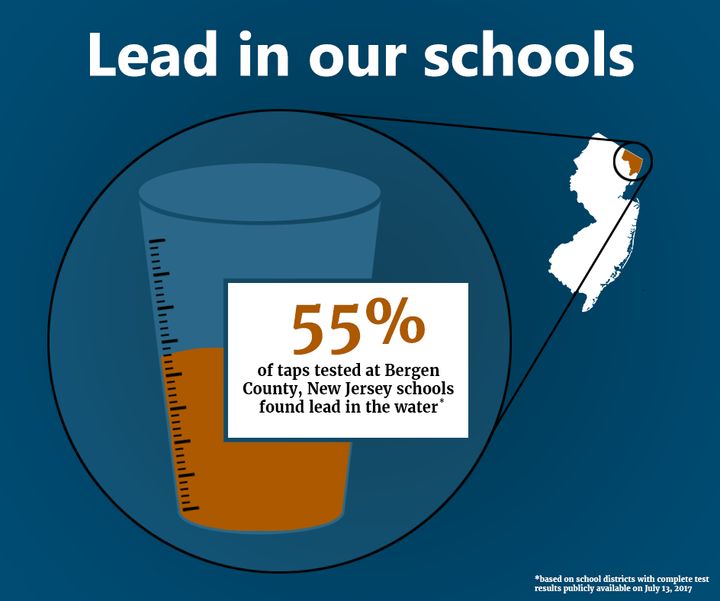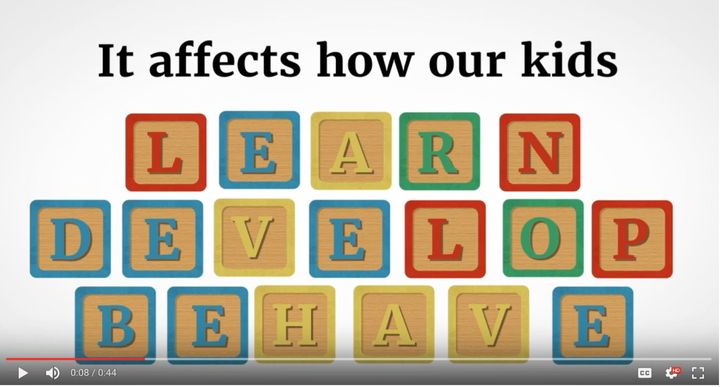As National Lead Poisoning Prevention Week draws to a close, it is time to take stock of states that are beginning to take action to “Get the Lead Out” of our drinking water. (Spoiler: two more states will consider key policies early next week.)
A potent neurotoxin, lead affects how our children learn, grow, and behave. According to the EPA,"[i]n children, low levels of [lead] exposure have been linked to damage to the central and peripheral nervous system, learning disabilities, shorter stature, impaired hearing, and impaired formation and function of blood cells."

Medical researchers estimate that more than 24 million children in America will lose IQ points due to low levels of lead.
While the medical science is more advanced now, the danger of lead has been known since Roman times. Yet for nearly a century, as our nation aspired to overcome real or perceived material scarcity, we embedded lead into the fabric our economy. Manufacturers put lead into our paint, our plumbing, our gasoline, and many other products.
For the past few decades, public health advocates have been working to undo the damage. Banning lead in gasoline immediately removed a major source of toxic air pollution. Barring lead in paint stopped a major threat to children’s health from becoming even worse, but we are still cleaning up the damage from millions of homes, as well as lead in dust and soil.
Yet until the crisis in Flint, Michigan, few Americans paid as much attention to another pervasive pathway for this potent toxin: the pipes and plumbing that bring drinking water right to our faucets. In the wake of Flint, we now know that thousands of communities across the country have lead in their drinking water.
In fact, lead is even contaminating drinking water in schools and pre-schools — flowing from thousands of fountains and faucets where our kids drink water every day. Here is a snapshot of lead contamination data from schools available earlier this year:

Get the Lead Out (2017).
In all likelihood, the confirmed cases of lead in schools’ water are just the tip of the iceberg. Most schools have at least some lead in their pipes, plumbing, or fixtures. And wherever there is lead in the water delivery system, there is a risk of contamination.

Lead in the water at more than half the taps tested in Bergen County schools.
In fact, all kinds of communities are experiencing lead contamination of drinking water. This summer, for example, our researchers examined new testing data from schools in Bergen County, New Jersey: of the school districts with complete test results available, more than half the taps tested found lead in the water.
All Americans deserve safe drinking water. That’s why doctors, nurses, and parents across the country are calling on public officials to “Get the Lead Out.” Replacing pipes, plumbing, fountains and/or fixtures that contain lead is the most effective, permanent solution to prevent contamination of the water our children drink, at school or elsewhere. For example, if the pipe connecting a school (or home or child care center) to the water main in the street is made of lead, that lead service line is likely to be the largest single source of water contamination.
While removing all of these lead-bearing parts will take time, installing filters certified to remove lead is an immediate step schools and daycares can take to begin protecting children right now.
Lastly, we need an enforceable standard that protects children’s health. The American Academy of Pediatrics (AAP) recommends that schools keep lead concentrations in water no greater than one part per billion (ppb). Taps used for drinking or cooking that test above 1 ppb of lead should be shut off until remediated.

A new toolkit to help parents and teachers understand the toxic threat of lead in drinking water and demand effective solutions.
A new toolkit to help parents and teachers understand the toxic threat of lead in drinking water and demand effective solutions.
In past years, the relatively few state and local governments addressing lead in drinking water mostly focused on testing. In 2017, officials are starting to adopt more preventative policies.
In Washington state, the state legislature has ordered the department of health to develop guidance for schools on how to limit lead in water at 1 ppb, as per AAP’s recommendation. Both Washington, DC, and San Diego have adopted a 5 ppb standard for schools’ water. Moreover, the DC ordinance also requires filters to be installed at faucets and fountains in District schools, parks, and daycares. Oregon now has a law requiring schools to develop health and safety plans, including measures to reduce lead contamination.
Two more states will consider protective policies this week. On Monday, October 30th, the Massachusetts legislature will hold a hearing on a bill that would truly “Get the Lead Out” of schools’ water - requiring filters, removing lead-bearing materials, and establishing a 1 ppb standard. And on Tuesday, the Wisconsin state senate is poised to vote on a measure that would greatly facilitate the removal of lead service lines, the single largest source of lead contamination in homes across the state.
Our children deserve a healthy, lead-free future. It’s time to get the lead out of drinking water.